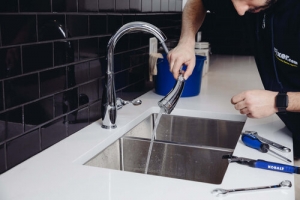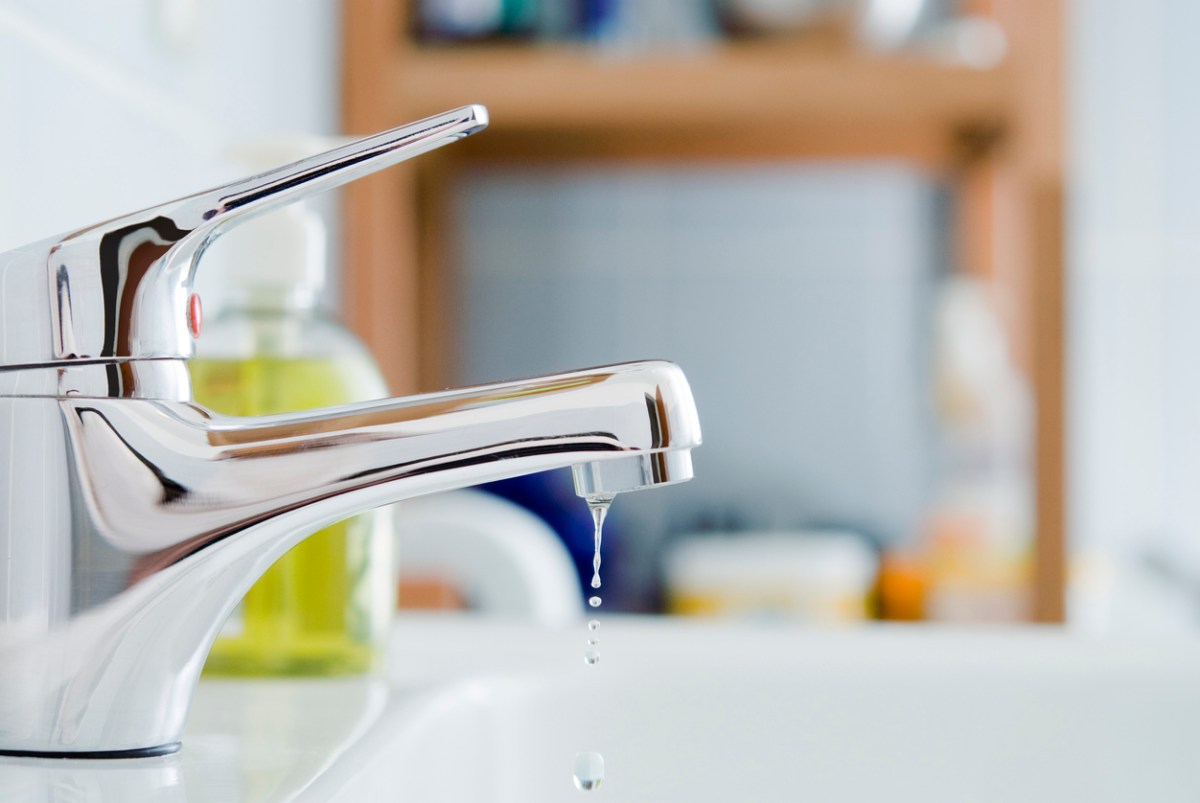How It's Important to Deal with a Dripping Faucet
How It's Important to Deal with a Dripping Faucet
Blog Article
The article directly below pertaining to Why Are My Faucets Dripping (And Can I Fix It Myself)? is amazingly stimulating. Don't overlook it.

Leaking taps could feel like a small aggravation, but their impact goes beyond just the nuisance of the audio. From drainage to sustaining unnecessary monetary costs and health risks, ignoring a trickling tap can result in different effects. In this post, we'll delve into why it's essential to resolve this typical home concern immediately and efficiently.
Wastefulness of Water
Environmental Effect
Leaking taps contribute dramatically to water wastage. According to the Environmental Protection Agency (EPA), a solitary faucet leaking at one drip per secondly can throw away greater than 3,000 gallons of water each year. This not just strains water resources yet likewise influences environments and wild animals dependent on them.
Financial Expenses
Boosted Water Costs
Past the ecological influence, dripping faucets can pump up water expenses significantly. The collected waste gradually equates into higher energy expenditures, which can have been prevented with timely fixings.
Possible Residential Or Commercial Property Damage
In addition, extended dripping can lead to harm to fixtures and surface areas surrounding the tap. Water accumulation can create staining, deterioration, and even architectural problems if left neglected, leading to added repair service costs.
Health and wellness Concerns
Mold And Mildew and Mildew Development
The constant existence of moisture from a leaking tap develops an optimal setting for mold and mildew development. These fungi not only jeopardize interior air top quality yet also pose health and wellness dangers, especially for people with respiratory conditions or allergies.
Waterborne Illness
Stagnant water in dripping faucets can become a breeding ground for bacteria and other pathogens, enhancing the danger of waterborne illness. Contaminants such as Legionella microorganisms grow in stationary water, potentially leading to serious diseases when ingested or inhaled.
DIY vs. Professional Repair work
Advantages and disadvantages of DIY Repair Work
While some may attempt to repair a leaking faucet themselves, do it yourself repairs feature their own collection of difficulties. Without correct knowledge and devices, do it yourself attempts can aggravate the issue or cause insufficient repairs, extending the trouble.
Advantages of Working With a Professional Plumber
Hiring an expert plumber makes sure that the underlying source of the dripping faucet is dealt with efficiently. Plumbing professionals have the proficiency and tools to detect and fix faucet problems efficiently, saving time and minimizing the risk of more damages.
Step-by-Step Guide to Repairing a Dripping Faucet
Devices Called for
Prior to attempting to fix a trickling tap, gather the essential devices, including a flexible wrench, screwdrivers, replacement components (such as washers or cartridges), and plumber's tape.
Common Tap Issues and Their Solutions
Determine the type of tap and the specific problem causing the drip. Typical troubles include damaged washers, corroded valve seats, or malfunctioning O-rings. Describe producer instructions or on the internet tutorials for detailed support on repairs.
Safety nets
Normal Maintenance Tips
To prevent dripping taps, do regular maintenance such as cleansing aerators, inspecting for leaks, and replacing worn-out parts immediately. In addition, take into consideration installing water-saving devices or updating to a lot more effective fixtures.
Value of Prompt Repair Works
Attending to leaking faucets as quickly as they're seen stops additional water wastage and potential damage, ultimately conserving both water and money in the long run.
Influence On Property Worth
Perception of Well-Maintained Property
Keeping a residential property in good condition, including dealing with upkeep issues like leaking taps, enhances its viewed worth and value amongst possible buyers or occupants.
Impact on Resale Worth
Residences with well-maintained plumbing fixtures, consisting of taps, command greater resale worths in the property market. Dealing with leaking faucets can add to a favorable perception throughout home inspections and negotiations.
Environmental Duty
Individual Contribution to Preservation
Taking duty for repairing leaking taps straightens with broader efforts toward water preservation and ecological sustainability. Every person's actions jointly make a substantial influence on maintaining precious resources.
Sustainable Living Practices
By prioritizing prompt repairs and adopting water-saving habits, individuals contribute to lasting living techniques that benefit both present and future generations.
Verdict
Resolving a trickling faucet exceeds mere convenience; it's an essential step towards saving water, lowering financial costs, and safeguarding wellness and property. Whether via DIY repair work or specialist help, taking action to deal with dripping faucets is a small yet impactful method to advertise accountable stewardship of sources and contribute to a much healthier, more sustainable future.
How to Fix a Dripping or Leaky Faucet
A leaking faucet is one of the most common problems that homeowners encounter, but it being commonplace doesn’t make it any less annoying. The constant drip drip drip of a leaking bathtub faucet, showerhead, or sink tap can disturb your home’s serenity. Left neglected, a dripping faucet can also result in higher water bills and discoloration or mold growth in your sink or plumbing fixtures.
Fortunately, you don’t have to be a trained plumber to know how to stop a dripping faucet. With some basic tools, replacement parts, and a little patience, leaky faucet repair is a breeze. In this article, we’ll explain what causes dripping faucets and how you can fix them.
What Causes a Leaking Faucet?
Kitchen and bathroom faucets come in all manner of designs, but most involve some combination of valves, O-rings, seals, and washers. The O-ring is usually the weakest link, but any one of these pieces can wear down over time. Heat, moisture, temperature fluctuations, minerals, mold, and movement can contribute to warping and corrosion, breaking the watertight seal. This just comes with the territory of being a homeowner. Everything is always subject to wear and tear, and some component parts of your appliances and fixtures need to be replaced on occasion. At least replacement O-rings are cheap!
More rarely, dripping faucets can be a symptom of excessively high water pressure. Were this the case in your home, you would probably notice that the leak is not isolated to one faucet. Water pressure issues are harder to resolve on your own. We recommend contacting a professional plumber if you suspect your water pressure is too high.
How to Fix a Dripping Faucet
Pipe wrench or monkey wrench Allen wrench set Screwdrivers Old towel or rag Shut off the water.
Before you do anything, you need to turn off the water to keep from drenching your kitchen or bathroom. You should find a valve under the sink and against the wall. Once you’ve turned this valve, try turning the faucet on to confirm that the water source has been cut off.
If you can’t locate your local valve for the faucet you’re working on, you can always shut off the water to the house at the main valve. Of course, this will prohibit anyone from using the sinks, showers, or toilets while you’re working on the faucet that’s giving you trouble.
Plug or block the drain.
You’ll be disassembling the faucet and removing some small bits of hardware. Plug the drain with a stopper or rag to avoid the possibility of a small screw falling into your P-trap.
Take apart the faucet assembly.
There are several varieties of kitchen and bathroom faucets, each with its own manner of assembly. For detailed instructions on how to disassemble your faucet, you can refer to the fixture’s manual or contact the manufacturer. If you know whether you have a ball, disc, cartridge, or compression faucet, you can find detailed schematics online.
In general, you need to begin by removing the faucet handles. You might notice a small screw that you’ll need to remove with a screwdriver or Allen wrench. If you don’t see any visible securing hardware, it’s likely hidden under a decorative cap that can be unscrewed or popped off with flathead screwdriver.
Remove each piece methodically, consulting a schematic when necessary. Take notes or arrange the pieces in such a way to make it easier to correctly reassemble the faucet later.
Remove the cartridge.
Once you’ve removed the handles and securing hardware, you should be able to remove the valve cartridge or stem. Some cartridges will slide right out. Other faucet models will require you to loosen a nut with a pipe wrench before you can remove the valve stem.
Examine the exposed hardware.
With the cartridge or stem removed, inspect the component parts. Check the rubber O-rings for wear and tear. Also examine the seat washer for corrosion or other damage. These pieces are usually the responsible parties for a dripping faucet, but it’s worth inspecting the other component parts while you have the faucet disassembled.
Find replacement parts.
Once you’ve identified which faucet component has failed, find an identical replacement. Your local hardware store should have O-rings, seat washers, and other standard components in stock. If you have a luxury or uncommon faucet, you may have to contact the manufacturer for a replacement part.
It’s a good idea to take your old parts with you to the hardware store so you can compare them with the store’s inventory and be sure you’re purchasing the correct replacement.
Reassemble the faucet.
With your new parts in hand, reconstruct the faucet and handles. Don’t be tempted to overtighten screws or nuts. You might think this could create a better seal, but it can instead damage or bend a delicate part of the assembly and create a new problem for you.
Turn on the water and test the faucet.
The only thing left to do is test your work. Unplug the sink, turn the water back on, and try the faucet. Congratulate yourself on a job well done!
https://www.libertyhomeguard.com/how-to-fix-a-dripping-or-leaky-faucet/

As a keen person who reads on , I think sharing that topic was really helpful. Appreciated our write-up? Please quickly share it. Let another person locate it. I am grateful for your time. Return soon.
Report this page